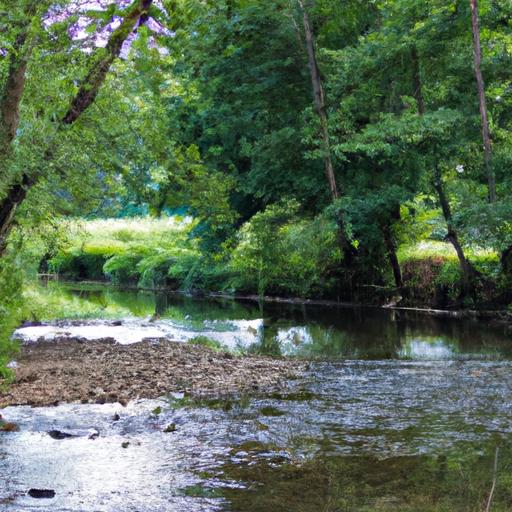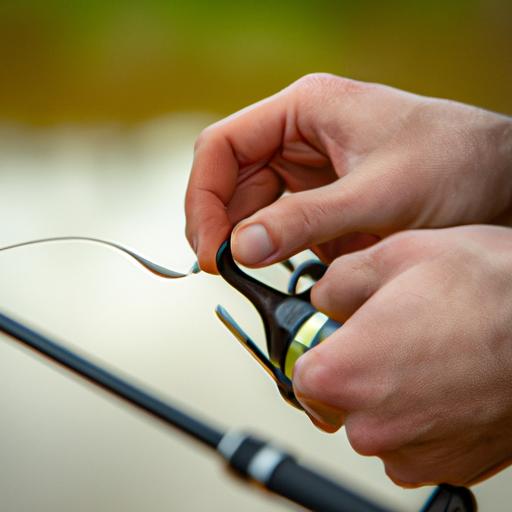Rivers hold a mystical allure, captivating us with their flowing waters and the promise of adventure. Whether it’s the gentle lapping of waves against a fishing boat or the adrenaline rush of kayaking through rapids, rivers offer a sanctuary for recreation. One such river that has captured the hearts of many is the Connecticut River. In this article, we will delve into the depths of this majestic waterway and explore just how many people utilize it for recreational purposes.
A. Importance of rivers for recreational activities
Rivers have long been a source of solace and joy for humanity. They serve as natural playgrounds, offering a multitude of recreational opportunities. From fishing to boating, rivers provide an escape from the mundane and an avenue to reconnect with nature. The Connecticut River, with its abundant resources and picturesque landscapes, epitomizes the essence of a recreational haven.
B. Overview of the Connecticut River as a recreational resource
Stretching over 400 miles, the Connecticut River winds its way through four states, namely New Hampshire, Vermont, Massachusetts, and Connecticut. This iconic waterway not only holds historical significance, but also boasts breathtaking vistas and an array of recreational activities. As one of the longest rivers in New England, it has become a cherished destination for outdoor enthusiasts.
The Connecticut River offers a plethora of opportunities for recreation. Fishing enthusiasts flock to its shores, casting their lines in search of prized catches such as trout, bass, and salmon. Boating and kayaking enthusiasts navigate the river’s currents, immersing themselves in its tranquil beauty. Moreover, wildlife enthusiasts and birdwatchers find solace along the riverbanks, observing the diverse ecosystem that thrives within its embrace.
As we embark on this journey to discover how many individuals utilize the Connecticut River for recreation, we will explore the factors that influence its popularity, statistics and data on river usage, and the need for its conservation. So, let’s set sail and uncover the secrets of this magnificent waterway together.
Understanding the Connecticut River
A. Geographic location and characteristics
Nestled in the heart of New England, the Connecticut River meanders through picturesque landscapes, offering a diverse range of recreational possibilities. Originating at the Fourth Connecticut Lake in northern New Hampshire, this majestic river flows southward, creating a natural border between Vermont and New Hampshire before making its way through Massachusetts and Connecticut. Its vast watershed encompasses a plethora of natural wonders, including serene lakes, dense forests, and vibrant wetlands.
The Connecticut River boasts a unique combination of characteristics that make it an ideal destination for recreation. Its gentle currents and varying depths cater to both novice and experienced water enthusiasts. The river’s width varies throughout its course, providing ample room for various activities, from leisurely fishing to exhilarating water sports. Moreover, the river’s natural beauty, characterized by lush greenery and stunning vistas, adds an enchanting touch to any recreational experience.
B. Length and flow of the Connecticut River
Spanning over 400 miles, the Connecticut River stands as a testament to the power and grandeur of nature. This meandering waterway flows through diverse landscapes, traversing mountains, valleys, and urban areas alike. Its flow is influenced by several factors, including precipitation, snowmelt, and dam releases. During dry periods, the river’s flow may decrease, while heavy rainfall or snowmelt can lead to increased water levels and faster currents.
The Connecticut River’s length and flow contribute significantly to its recreational appeal. Its extensive reach allows for exploration and adventure, with countless opportunities to discover hidden coves, secluded fishing spots, and captivating wildlife habitats. The varying flow of the river adds a touch of excitement, catering to different preferences and skill levels.
As we continue our journey along the Connecticut River, we will delve deeper into the specific recreational activities that draw people to its embrace. From the thrill of reeling in a prized catch to the serenity of birdwatching, the river offers a myriad of experiences that cater to every adventurer’s desires. So, let’s dive in and explore the recreational wonders that await us.
Understanding the Connecticut River
A. Geographic location and characteristics
The Connecticut River meanders through the northeastern United States, serving as a lifeline for communities along its banks. Originating in the northern part of New Hampshire, it flows southward, forming the border between Vermont and New Hampshire. As it continues its journey, it winds through Massachusetts and Connecticut, before finally emptying into Long Island Sound.
With its diverse geography, the Connecticut River offers a captivating mix of landscapes. From the rugged beauty of the White Mountains in New Hampshire to the rolling hills and fertile valleys of Massachusetts and Connecticut, the river showcases the breathtaking variety of the region. Its banks are adorned with lush forests, picturesque farmlands, and charming towns, creating an idyllic backdrop for recreational activities.
B. Length and flow of the Connecticut River
Spanning approximately 410 miles, the Connecticut River stands as a testament to the power and grandeur of nature. It is the longest river in New England, captivating all who encounter its mighty waters. As it flows southward, it gains strength from numerous tributaries, including the Deerfield, Westfield, and Chicopee rivers.
The flow of the Connecticut River varies throughout its course. In its upper reaches, the river cascades through narrow gorges and swift rapids, providing an exhilarating experience for thrill-seeking adventurers. As it reaches the lower parts, the river mellows, creating wide and tranquil stretches that beckon leisurely boating and fishing.
Understanding the geographical location, characteristics, length, and flow of the Connecticut River is essential to comprehend its significance as a recreational resource. Let’s now explore the various factors that influence the utilization of this river for recreation.
Statistics and Data on Connecticut River Recreation
A. Surveys and studies on river usage
To paint a clear picture of the recreational activities on the Connecticut River, numerous surveys and studies have been conducted. These initiatives aim to understand the extent to which people utilize this natural resource for leisure and the impact it has on their lives. Researchers have ventured along the river’s banks, engaging with individuals and communities to gather valuable data.
These surveys delve into the specific activities individuals partake in, such as fishing, boating, and wildlife watching. They also explore the motivations behind choosing the Connecticut River as a recreational destination. By analyzing the responses, experts can identify trends, preferences, and patterns of usage, providing insights into the river’s significance as a recreational hotspot.
B. Estimations of the number of people engaged in recreational activities
While exact figures are elusive, estimates shed light on the number of people who engage in recreational activities on the Connecticut River. These estimations take into account various factors, including the population density of nearby communities and the accessibility of the river. Additionally, data from permits, licenses, and registrations for activities like fishing and boating contribute to these estimations.
It is important to note that the number of people utilizing the Connecticut River for recreation varies throughout the year. During peak seasons, such as summer, the river teems with activity as locals and tourists alike seek respite from the heat. However, during colder months, the number of individuals engaging in recreational activities may decline.
C. Comparison with other rivers in the region
When evaluating the popularity of the Connecticut River for recreational purposes, it is valuable to compare it with other rivers in the region. This comparison provides a broader perspective on its significance and helps identify any unique aspects that attract individuals to this particular waterway.
While each river has its own charm, the Connecticut River stands out due to its length, diverse ecosystem, and the range of recreational opportunities it offers. By understanding how it measures up against its counterparts, we can gain a better understanding of its appeal and the role it plays in the lives of those who seek adventure and serenity along its banks.
With surveys, estimations, and comparisons, we can begin to grasp the scale of recreational activities on the Connecticut River. In the next section, we will draw conclusions from this data and reflect on the importance of preserving and promoting this natural gem.
Conclusion
In conclusion, the Connecticut River stands as a cherished recreational resource for countless individuals seeking solace and adventure. Its meandering waters and picturesque landscapes provide the perfect backdrop for a myriad of activities, from fishing and boating to wildlife observing. The river’s accessibility, environmental conditions, and presence of recreational facilities contribute to its popularity among outdoor enthusiasts.
While it is difficult to pinpoint an exact number of people who utilize the Connecticut River for recreation, it is evident that it attracts a significant crowd. Surveys and studies have provided valuable insights into the river’s usage patterns, highlighting its importance as a regional recreational hub. Comparisons with other rivers in the area further emphasize its significance and popularity.
As we revel in the joys that the Connecticut River offers, it is crucial to recognize the need for conservation and sustainable use. Preserving its natural beauty and protecting its delicate ecosystem should be at the forefront of our minds. By doing so, we can ensure that future generations will continue to find solace and delight in the wonders of this magnificent waterway.
So, whether you’re a fishing enthusiast seeking the thrill of the catch, a boating enthusiast yearning for adventure, or a nature lover eager to observe the diverse wildlife, the Connecticut River welcomes you with open arms. Immerse yourself in its tranquil embrace and discover the endless possibilities it holds. Let the Connecticut River be your gateway to unforgettable recreational experiences.
Together, let us champion the preservation of this natural treasure, ensuring that the Connecticut River remains a haven for recreation for years to come.




